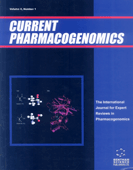Abstract
The toxicity that can result from the exposure to numerous xenobiotics can vary greatly for each individual. This is mainly due to differences in the activity of xenobiotic metabolizing enzymes (XME) that participate in the disposal of toxic xenobiotics from the human body. The genes that encode XMEs present a variety of polymorphisms that occur in the promoter or coding regions, resulting in differences in the amount or in the catalytic activities of the enzymes. Human populations differ regarding the frequency of alleles and haplotypes that are present in a given geographic region. Genetic background and ancestry are the main reasons for such variability. South America, due to an extensive colonization period, is populated by descendents of Amerindians, Africans and Europeans. The admixtures that happened in each country, however, vary according to historical and geographical conditions. Brazil, for example, has one of the worlds most admixed populations with genetic contributions from several tribes of Amerindians, many still existent, from Africans, and from various waves of European immigrants. In this review we will discuss the frequency of genetic polymorphisms of XMEs, particularly Cytochrome P450s and Glutathione S-transferases, found in different populations of South American countries. The genetic background and degree of population admixture of each country is taken under consideration in a discussion of the difficulties generated by enzyme polymorphisms in the treatment of individuals within such populations.
Keywords: Xenobiotic disposition, metabolism, Cytochrome P450s, polymorphisms, GSTT1 gene
Current Pharmacogenomics
Title: Pharmacogenomics of Xenobiotic Metabolizing Enzymes in South American Populations
Volume: 4 Issue: 1
Author(s): Mario B. Filho, Rodolpho M. Albano, Ana Rossini and Luis F. R. Pinto
Affiliation:
Keywords: Xenobiotic disposition, metabolism, Cytochrome P450s, polymorphisms, GSTT1 gene
Abstract: The toxicity that can result from the exposure to numerous xenobiotics can vary greatly for each individual. This is mainly due to differences in the activity of xenobiotic metabolizing enzymes (XME) that participate in the disposal of toxic xenobiotics from the human body. The genes that encode XMEs present a variety of polymorphisms that occur in the promoter or coding regions, resulting in differences in the amount or in the catalytic activities of the enzymes. Human populations differ regarding the frequency of alleles and haplotypes that are present in a given geographic region. Genetic background and ancestry are the main reasons for such variability. South America, due to an extensive colonization period, is populated by descendents of Amerindians, Africans and Europeans. The admixtures that happened in each country, however, vary according to historical and geographical conditions. Brazil, for example, has one of the worlds most admixed populations with genetic contributions from several tribes of Amerindians, many still existent, from Africans, and from various waves of European immigrants. In this review we will discuss the frequency of genetic polymorphisms of XMEs, particularly Cytochrome P450s and Glutathione S-transferases, found in different populations of South American countries. The genetic background and degree of population admixture of each country is taken under consideration in a discussion of the difficulties generated by enzyme polymorphisms in the treatment of individuals within such populations.
Export Options
About this article
Cite this article as:
Filho B. Mario, Albano M. Rodolpho, Rossini Ana and Pinto F. R. Luis, Pharmacogenomics of Xenobiotic Metabolizing Enzymes in South American Populations, Current Pharmacogenomics 2006; 4 (1) . https://dx.doi.org/10.2174/157016006776055428
| DOI https://dx.doi.org/10.2174/157016006776055428 |
Print ISSN 1570-1603 |
| Publisher Name Bentham Science Publisher |
Online ISSN 1570-1603 |
 9
9Related Articles
-
Micro-RNA in Disease and Gene Therapy
Current Drug Discovery Technologies The Use of Transient Expression Systems for the Rapid Production of Virus-like Particles in Plants
Current Pharmaceutical Design The Immunohistochemical Expression of the E-Cadherin, Alpha-Catenin,Beta-Catenin and Gamma Catenin Proteins in Epithelial Ovarian Tumours: Relationship with Clinicopathologic Parameters and Patient Survival
Current Women`s Health Reviews Liposomal-All-trans-Retinoic Acid in the Treatment of Acute Promyelocytic Leukemia
Current Cancer Therapy Reviews Heterocyclic Scaffolds: Centrality in Anticancer Drug Development
Current Drug Targets On the Use of Hydrogels in Cell Encapsulation and Tissue Engineering Systems
Recent Patents on Drug Delivery & Formulation Role of α6β4 Integrin in Cell Motility, Invasion and Metastasis of Mammary Tumors
Current Protein & Peptide Science Novel Metals and Metal Complexes as Platforms for Cancer Therapy
Current Pharmaceutical Design Applications of the Rare Earth Elements in Cancer Imaging and Therapy
Current Nanoscience Natural Antioxidants: Therapeutic Prospects for Cancer and Neurological Diseases
Mini-Reviews in Medicinal Chemistry Importance of ABC Transporters in Drug Development
Current Pharmaceutical Design The Mad2-Binding Protein p31<sup>comet</sup> as a Potential Target for Human Cancer Therapy
Current Cancer Drug Targets Triterpenoids for Cancer Prevention and Treatment: Current Status and Future Prospects
Current Pharmaceutical Biotechnology Inhibition of Procarcinogen Activating Enzyme CYP1A2 Activity and Free Radical Formation by Caffeic Acid and its Amide Analogues
Drug Metabolism Letters Combined Transarterial Chemoembolization with Microwave Ablation <i>versus</i> Microwave Alone for Treatment of Medium Sized Hepatocellular Carcinoma
Current Cancer Drug Targets Therapeutic Agents Based on DNA Sequence Specific Binding
Current Topics in Medicinal Chemistry Versatile Applications of microRNA in Anti-Cancer Drug Discovery: From Therapeutics to Biomarkers
Current Drug Discovery Technologies Functional Nanoplatforms for Enhancement of Chemotherapeutic Index
Anti-Cancer Agents in Medicinal Chemistry Combination Platinum-based and DNA Damage Response-targeting Cancer Therapy: Evolution and Future Directions
Current Medicinal Chemistry CAR T-cell Therapy: A New Era in Cancer Immunotherapy
Current Pharmaceutical Biotechnology













.jpeg)








